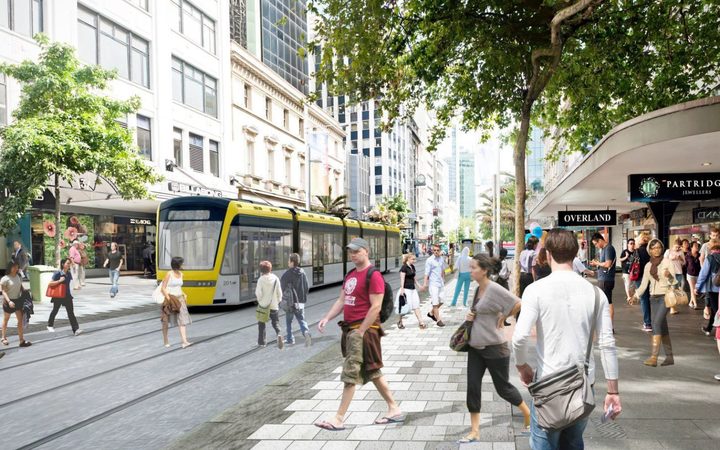 blog
blog
Auckland - what’s next for our Super City
07 December 2018, by
If you haven't already been run over by a Lime Scooter on the streets of Auckland you probably will be soon, as Auckland Council has voted to start trailing car-free streets in central Auckland - in part to make way for scooters, but also bicycles and pedestrians. We like the idea and agree it should be trialed.
"There are over 100,000 people working in the Auckland central city. Pedestrian numbers are doubling every few years. We have to do this.” says Auckland Mayor Phil Goff told Councillors,
Time to catch up Auckland
Other cities around the world have been doing this for some time. We think it’s time for Auckland to catch up! The city of Sydney has recently committed $220M to a project that will see the city’s main George Street strip pedestrianised to create inviting public spaces where people want to live, shop, visit and do business.
Further afield in Pontevedra, Spain they have a car free city center. Mayor, Miguel Anxo Fernández Lores pedestrianised 300,000m² of the centre, paving the streets with granite flagstones. “The benefits are numerous. On the same streets where 30 people died in traffic accidents from 1996 to 2006, only three died in the subsequent 10 years, and none since 2009. Co2 emissions are down 70%”, says Lores.
Queen Street getting left behind
Queen Street was once a prime business location, but that was 'back in the day' before Britomart, Viaduct and Wynyard Quarter captured our hearts and showed us what was possible. Various initiatives have been implemented over the years to improve the streetscape and reduce traffic and parking on Queen Street. These have largely been successful, but they haven't gone far enough to provide any meaningful competition to the newer precincts.
Queen Street still suffers from being disjointed and generally unappealing as a retail, hospitality and office location. It’s a mixed use, undefined space, home to a variety of occupants from language schools, tertiary education institutes, multi-national retailers and a diverse range of other office and service users.
What occupiers really want
Many of the major office occupiers have migrated out of the Queen Street area over the last two decades – to nearby Shortland Street initially – but more recently – Britomart, Viaduct, Wynyard and fringe CBD locations like Victoria Street West. Some have been venturing even further - to Sylvia Park, Smales Farm and the other "suburban" office parks.
There are a few notable exceptions providing glimpses of what Queen Street can be - the Deloitte building at 80 Queen Street, Robt. Jones SAP Tower and the newly refurbished 125 Queen Street. It is encouraging to see more renewals in the pipeline such as the 246 Queen Street redevelopment/refurbishment. But Queen Street is generally made up of older/tired buildings with smaller floor plates and is therefore not a natural choice as an office location for most business in 2019.
What we know our clients love about areas such as Britomart, Viaduct and Wynyard is their access to public amenities, their range of hospitality and food offerings and particular the fact their staff are able to walk out at night and feel safe.
We think this initiative could rejuvenate Queen Street so that it can again compete with the city’s latest urban renewal projects and revive its past reputation as the prime address for business, hospitality and retail in New Zealand.
The importance of getting it right
There will be detractors. We can anticipate what they will say "this will kill retail, people need to be able to park outside the door, this is a waste of ratepayers money". We don't dismiss these concerns. The balance between accessibility by vehicles, for example, to provide deliveries for retailers and hospitality services requires meticulous design and thoughtful execution.
The measures of success should be holistic taking into account the relative benefits (balanced against Council’s investment) of metrics like:
- increased tourism spend on Queen Street
- reduction in crime and homeless people living on the street
- enhancement of the public realm
- improvement of the natural environment
- increase in retail spending
- influx of new capital to refurbish existing buildings
- increase in occupancy of retail and office uses
A new Queen Street - what we hope to see
As advisers to corporate occupiers we wonder how the pedestrianisation of Queen Street will effect office users and how this might drive landlord/developer behaviours.
Office users (aka "pedestrians") will benefit from safer streets and better manoeuvrability around the city centre - due to not having to wait for pedestrian crossing signals anymore. Based on overseas examples, we would expect the general vibrancy of streets to improve, use of public transport to increase (driving down Co2 emissions) and other wider benefits.
We would hope that this behaviour would drive landlords/developers to invest in upgrading the current Queen Street building stock, more residential developments, less multi-national retailers and more boutique offerings, and a higher standard of hospitality.
The aim must be to create a central street, a hub where people want to shop, live and do business.
Overall, we have to say we're positive that this trial is happening and we hope for bold and pragmatic leadership from Auckland Council to make it a success.
